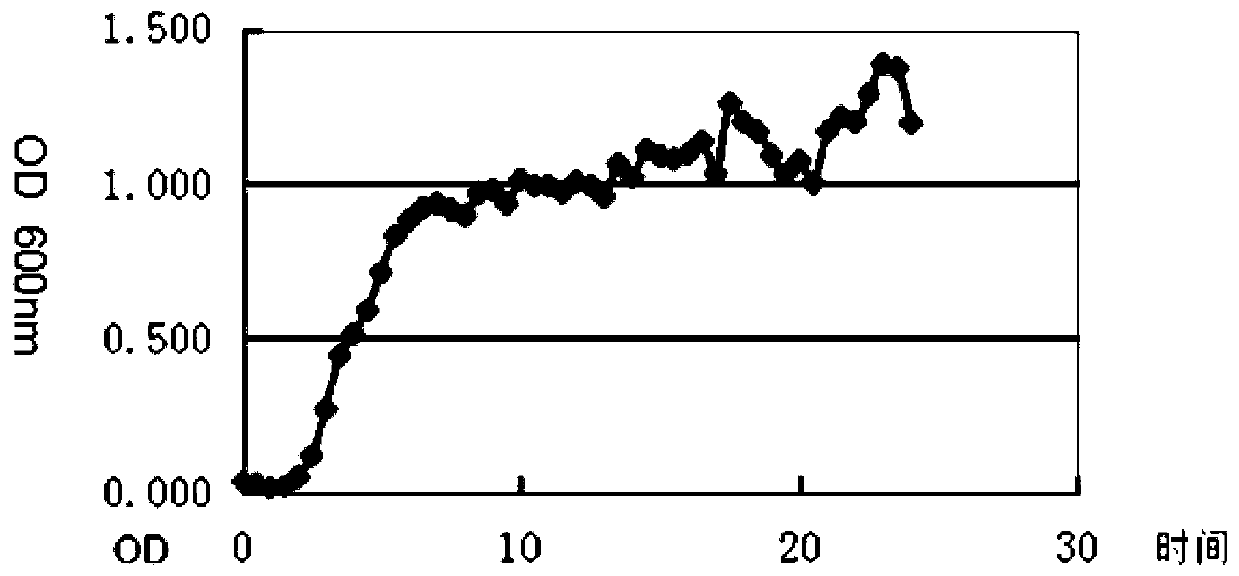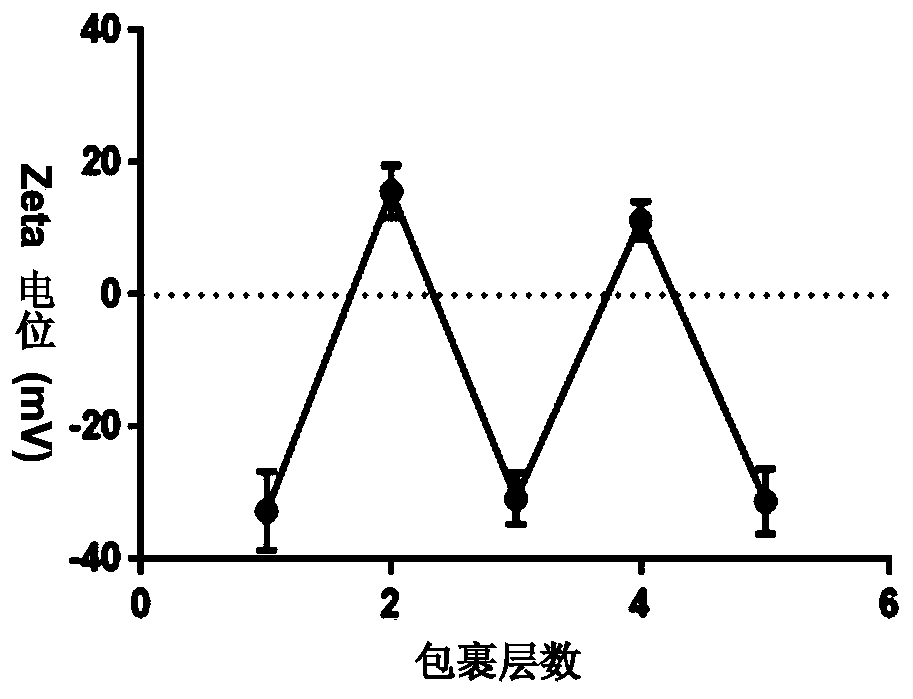Probiotics compound for treating inflammatory bowel disease
A technology of inflammatory bowel disease and probiotics, applied in the field of probiotic drugs, can solve the problem of low utilization rate of EcN, achieve the effect of improving colonic inflammation and promoting expression
- Summary
- Abstract
- Description
- Claims
- Application Information
AI Technical Summary
Problems solved by technology
Method used
Image
Examples
Embodiment 1
[0065] Embodiment 1 The preparation method of EcN complex of the present invention
[0066] 1. Cell activation
[0067] Mix 0.5 mL of EcN and 0.5 mL of 50% glycerol in a 1.5 mL centrifuge tube and store at -80°C. When cultivating bacteria, streak the plate on LB solid medium, cultivate overnight in a 37°C incubator, then pick colonies and inoculate them in LB liquid medium, shake overnight at 37°C and 220rpm / min, and then press the ratio of 1:100 To expand the culture, place it on a shaker at 37°C and 220rpm.
[0068] 2. Chitosan-sodium alginate coating
[0069] Select 20 mL of EcN bacterial solution in the logarithmic growth phase, centrifuge at 4000 rpm at 4 °C for 5 min in a refrigerated centrifuge, discard the supernatant, wash twice with 5 mL of PBS, centrifuge at 4000 rpm for 3 min, discard the supernatant, and resuspend the bacteria in 4 mL of PBS.
[0070] (1) Chitosan encapsulation: Add 0.5mL 1mg / ml chitosan solution to the resuspension, shake up and down for 10s, ...
Embodiment 2
[0077] EcN living bacteria growth logarithmic phase judgment before embodiment 2 wrapping
[0078] Before wrapping, ECN was inoculated in LB medium, cultured on a shaker at 37°C and 220r / min, and the OD value of the bacterial solution was detected at different times, and the bacteria in the logarithmic growth phase were selected for wrapping. The vertical axis in the figure represents the OD value, The abscissa is the time of cultivation, and the specific steps are as follows:
[0079] 1) Pick a single colony from the plate and inoculate it in LB liquid medium, and culture it in a shaker at 37°C and 220r / min until OD 600nm The value is around 0.6.
[0080] 2) Transplantation of EcN
[0081] Take 15 25ml test tubes, add 6mL LB liquid medium to each tube, and cultivate the bacterial solution to OD at a ratio of 1:200 600nm After the value was about 0.6, they were respectively inoculated into 14 test tubes, and 1 test tube was not inoculated, which was used as a negative contr...
experiment example 1ZE
[0087] Experimental example 1 ZETA potential detection
[0088] Use a ξ potential detector to detect the charge of each layer in the process of layer-by-layer wrapping 0, 1, 2, 3, 4, and 5, take the wrapped bacterial solution, and after dilution, use a ξ potential detector to detect the charge of each layer in the layer-by-layer wrapping process. The charge of the layer, according to the positive and negative charge ratio of each layer, judges its wrapping situation, and draws it into a graph.
[0089] like image 3 As shown, during the encapsulation process, positively charged chitosan will combine with ECN, and the negative charge on the surface of the bacterium will decrease, and a layer will be wrapped. When negatively charged sodium alginate is added, the negative charge on the surface of the bacterium will There is an increase, and the second layer is wrapped, and the fluctuation of the zeta potential represents the number of wrapped layers.
PUM
 Login to View More
Login to View More Abstract
Description
Claims
Application Information
 Login to View More
Login to View More - R&D Engineer
- R&D Manager
- IP Professional
- Industry Leading Data Capabilities
- Powerful AI technology
- Patent DNA Extraction
Browse by: Latest US Patents, China's latest patents, Technical Efficacy Thesaurus, Application Domain, Technology Topic, Popular Technical Reports.
© 2024 PatSnap. All rights reserved.Legal|Privacy policy|Modern Slavery Act Transparency Statement|Sitemap|About US| Contact US: help@patsnap.com










